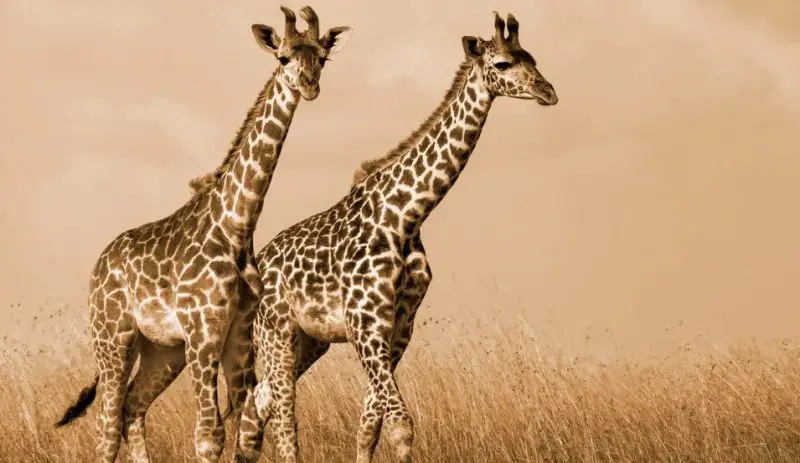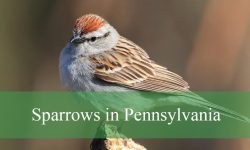Giraffes, the tallest land mammals on Earth, are universally admired for their graceful stature, distinctive coat patterns, and gentle demeanor. In Florida, these incredible animals are not confined to the African savannah but can be experienced up close in various wildlife parks and zoos. This article explores the world of giraffes in Florida, offering detailed insights into their biology, behavior, conservation, and the best places to encounter them.
Florida’s warm climate and well-managed wildlife facilities make it an ideal location for observing giraffes in environments that replicate their natural habitats. From interactive feeding sessions to educational programs, Florida’s wildlife parks provide memorable experiences for both casual visitors and animal enthusiasts.
Giraffes: The Gentle Giants of the Animal Kingdom

Giraffes are truly remarkable creatures. Adult males can reach heights of 18 to 19 feet, while females are generally slightly shorter, averaging around 16 to 17 feet. Their long necks, which contain the same number of vertebrae as a human neck but elongated, allow them to reach leaves high in trees that most other herbivores cannot. This adaptation reduces competition for food and plays an important role in the ecosystems where they naturally occur.
The giraffe’s unique coat patterns serve multiple purposes. Each individual has a distinctive pattern that functions as camouflage in the dappled light of their natural environment. These patterns also help researchers identify and track individual giraffes in the wild. Their skin is surprisingly tough, protecting them from thorns, and their long legs allow them to run at speeds of up to 35 miles per hour over short distances.
Giraffes are social animals that often form loose herds, which may consist of females and their young or bachelor groups of males. While they do not have a complex hierarchical structure like some other herd animals, social bonds are important, especially between mothers and calves. Observing giraffes in Florida provides an opportunity to learn about these behaviors, as many zoos recreate small herd environments that encourage natural interactions.
Where to Meet Giraffes in Florida
Florida is home to some of the most engaging giraffe encounters in the United States. These facilities prioritize animal welfare, education, and conservation while offering visitors the chance to experience giraffes up close.
Giraffe Ranch – Dade City
Giraffe Ranch in Dade City is one of Florida’s most immersive wildlife experiences. Visitors can take a safari-style tour through spacious enclosures that mimic African grasslands. The ranch allows guests to hand-feed giraffes, providing a rare opportunity to observe their eating habits and social interactions at close range. Guides often explain the unique aspects of giraffe biology, including their cardiovascular system, which allows them to pump blood to such extreme heights.
In addition to giraffes, Giraffe Ranch hosts zebras, antelopes, and other exotic species, making it a complete wildlife experience. Its educational programs emphasize conservation and the importance of protecting natural habitats, both in Africa and locally in Florida’s parks.
Brevard Zoo – Melbourne
The Brevard Zoo features the Expedition Africa exhibit, where a small herd of giraffes resides. Brevard Zoo encourages visitors to participate in giraffe feeding sessions. Watching giraffes extend their long tongues to grasp leaves is both fascinating and educational. These encounters highlight the giraffe’s dietary preferences, which primarily include acacia leaves and other foliage.
The zoo is active in conservation, both locally and internationally. Through partnerships with the Giraffe Conservation Foundation, Brevard Zoo supports research and initiatives to mitigate threats such as habitat fragmentation and poaching in Africa. The zoo also offers behind-the-scenes tours for visitors interested in learning about giraffe care, veterinary procedures, and enrichment activities.
Central Florida Zoo – Sanford
The Central Florida Zoo provides another excellent opportunity for giraffe interaction. Their “Up Close Giraffe Encounter” allows guests to feed giraffes from a raised platform, bringing visitors to eye-level with these gentle giants. Educational talks during the encounter cover giraffe anatomy, behavior, and conservation issues.
Giraffes at the Central Florida Zoo are part of breeding programs that aim to maintain genetic diversity in captivity. These programs are crucial for the long-term survival of giraffes, particularly for subspecies like the reticulated giraffe, which faces population declines in the wild.
Wild Florida – Kenansville
Wild Florida offers a unique drive-thru safari, providing a more naturalistic environment for giraffes and other animals. Here, giraffes roam semi-freely, and visitors can feed them during guided tours. Leroy, a friendly reticulated giraffe, is one of the park’s main attractions. Observing giraffes in this setting allows visitors to witness natural behaviors such as foraging, social interaction, and grooming.
Wild Florida places strong emphasis on conservation and education. A portion of the proceeds from giraffe encounters supports global efforts to protect wild giraffes. Guests leave with a greater appreciation of these animals and an understanding of the ecological challenges they face.
ZooTampa at Lowry Park – Tampa
ZooTampa at Lowry Park has become a popular destination for giraffe encounters. Visitors can feed the giraffes and learn about their anatomy, social structures, and conservation efforts. The zoo participates in the Association of Zoos and Aquariums’ Species Survival Plan, ensuring healthy breeding populations. ZooTampa also offers educational programs for children, focusing on wildlife preservation and the importance of biodiversity.
Understanding Giraffe Behavior and Habits
Observing giraffes in Florida allows visitors to gain insight into their behavior, which can differ slightly in captivity compared to the wild. Giraffes are generally gentle, calm, and curious animals. They use their long necks not just for feeding but also for communication, particularly during “necking” behavior where males spar to establish dominance.
Social interactions within giraffe herds include grooming, where individuals use their long tongues to clean each other’s heads and necks. This behavior strengthens social bonds and helps remove parasites. Calves stay close to their mothers for protection and nourishment, gradually integrating into the herd as they grow.
Giraffes are active during the day, typically feeding in the morning and late afternoon. They drink infrequently due to the challenges of lowering their heads to the ground, which can increase the risk of predators in the wild. In Florida, visitors can observe these feeding patterns during scheduled giraffe encounters.
Giraffe Conservation Efforts in Florida
Giraffes face numerous threats in the wild, including habitat loss, poaching, and civil unrest in parts of Africa. Florida’s wildlife parks contribute to global conservation through breeding programs, educational outreach, and partnerships with international organizations like the Giraffe Conservation Foundation.
These programs emphasize the importance of habitat preservation and species monitoring. In addition to international efforts, Florida’s zoos also focus on public education, fostering a sense of responsibility and appreciation for wildlife. Many visitors report that hands-on experiences with giraffes inspire a deeper understanding of environmental stewardship.
Tips for Visiting Giraffes in Florida
When planning a visit to see giraffes in Florida, timing can greatly enhance your experience. Early mornings and late afternoons are the best times to observe giraffes at their most active, as they engage in feeding and social behaviors.
Wearing comfortable clothing and closed-toe shoes is recommended, especially since many encounters involve walking or standing on raised platforms. Bringing a camera or smartphone is also a good idea to capture the giraffes’ unique coat patterns and interactions.
Visitors are encouraged to take part in guided tours and feeding sessions to gain a deeper understanding of giraffe anatomy, social behavior, and conservation efforts. Engaging with educational programs and supporting conservation initiatives not only enriches the visit but also helps sustain giraffe populations both locally and globally.
Why Encountering Giraffes Matters
Interacting with giraffes provides more than just an unforgettable experience; it fosters awareness and understanding of wildlife conservation. By observing their behavior, diet, and social dynamics, visitors gain an appreciation for the challenges giraffes face in the wild. Giraffes in Florida’s wildlife parks act as ambassadors, connecting people with the importance of protecting ecosystems across the globe.
Conclusion
Florida offers a rare chance to meet and learn about one of the most iconic animals on Earth. From Giraffe Ranch in Dade City to ZooTampa at Lowry Park, these encounters combine education, conservation, and unforgettable wildlife experiences. By supporting these programs, visitors contribute to the protection of giraffes both locally and internationally. Experiencing giraffes up close reminds us of the beauty and complexity of nature and the critical importance of preserving it for future generations.
FAQs About Giraffes in Florida
What species of giraffes can be found in Florida?
In Florida, most wildlife parks and zoos feature reticulated giraffes and Masai giraffes. These species are known for their striking coat patterns and are commonly part of breeding programs aimed at maintaining genetic diversity.
Where is the best place to see giraffes in Florida?
Some of the top locations include Giraffe Ranch in Dade City, Brevard Zoo in Melbourne, Central Florida Zoo in Sanford, Wild Florida in Kenansville, and ZooTampa at Lowry Park. Each facility offers unique opportunities for observation and interaction.
Can visitors feed giraffes in Florida?
Yes, many Florida zoos and wildlife parks allow visitors to feed giraffes under staff supervision. Feeding sessions provide an educational experience, allowing guests to learn about giraffe diet and behavior.
Are giraffes in Florida kept in naturalistic environments?
Florida’s wildlife parks strive to replicate the giraffes’ natural habitats. Many facilities provide open grasslands, trees for browsing, and adequate space for roaming, which encourages natural behaviors.
What conservation efforts are in place for giraffes in Florida?
Several zoos participate in breeding programs and educational initiatives. They also partner with international organizations like the Giraffe Conservation Foundation to support wild populations and promote public awareness about conservation challenges.
What is the best time of day to observe giraffes?
Giraffes are generally most active during the early morning and late afternoon. Visiting during these times increases the likelihood of observing natural behaviors such as feeding, social interactions, and grooming.
Are giraffe encounters suitable for children?
Absolutely. Most giraffe feeding experiences are designed for all ages, offering educational insights while allowing children to safely interact with these gentle giants.
How do giraffes in captivity differ from those in the wild?
While captive giraffes in Florida enjoy protection from predators and regular veterinary care, they may have smaller herd sizes and rely on staff for enrichment and diet management. However, many zoos aim to encourage natural behaviors to promote well-being.
Can I take photos of giraffes during my visit?
Yes, photography is generally encouraged. Visitors are advised to follow staff instructions to ensure safety for both humans and giraffes during encounters.
How can visitors support giraffe conservation while in Florida?
Visitors can participate in educational programs, donate to conservation foundations, and support zoos and wildlife parks that contribute to both local and global giraffe conservation initiatives.






